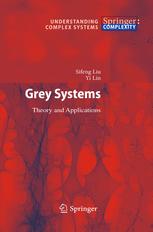

Most ebook files are in PDF format, so you can easily read them using various software such as Foxit Reader or directly on the Google Chrome browser.
Some ebook files are released by publishers in other formats such as .awz, .mobi, .epub, .fb2, etc. You may need to install specific software to read these formats on mobile/PC, such as Calibre.
Please read the tutorial at this link: https://ebookbell.com/faq
We offer FREE conversion to the popular formats you request; however, this may take some time. Therefore, right after payment, please email us, and we will try to provide the service as quickly as possible.
For some exceptional file formats or broken links (if any), please refrain from opening any disputes. Instead, email us first, and we will try to assist within a maximum of 6 hours.
EbookBell Team

0.0
0 reviewsDue to inherent limitations in human sensing organs, most data collected for various purposes contain uncertainties. Even at the rare occasions when accurate data are available, the truthful predictions derived on the data tend to create chaotic consequences. So, to effectively process and make sense out of available data, we need methods to deal with uncertainty inherently existing inside the data. The intent of this monograph is to explore the fundamental theory, methods, and techniques of practical application of grey systems theory, initiated by Professor Deng Julong in 1982. This volume presents most of the recent advances of the theory accomplished by scholars from around the world. From studying this book, the reader will not only acquire an overall knowledge of this new theory but also be able to follow the most current research activities. All examples presented are based on practical applications of the theory when urgent real-life problems had to be addressed. Last but not the least, this book concludes with three appendices. The first one compares grey systems theory and interval analysis while revealing the fact that interval analysis is a part of grey mathematics. The second appendix presents an array of different approaches of studying uncertainties. And, the last appendix shows how uncertainties appear using general systems approach.